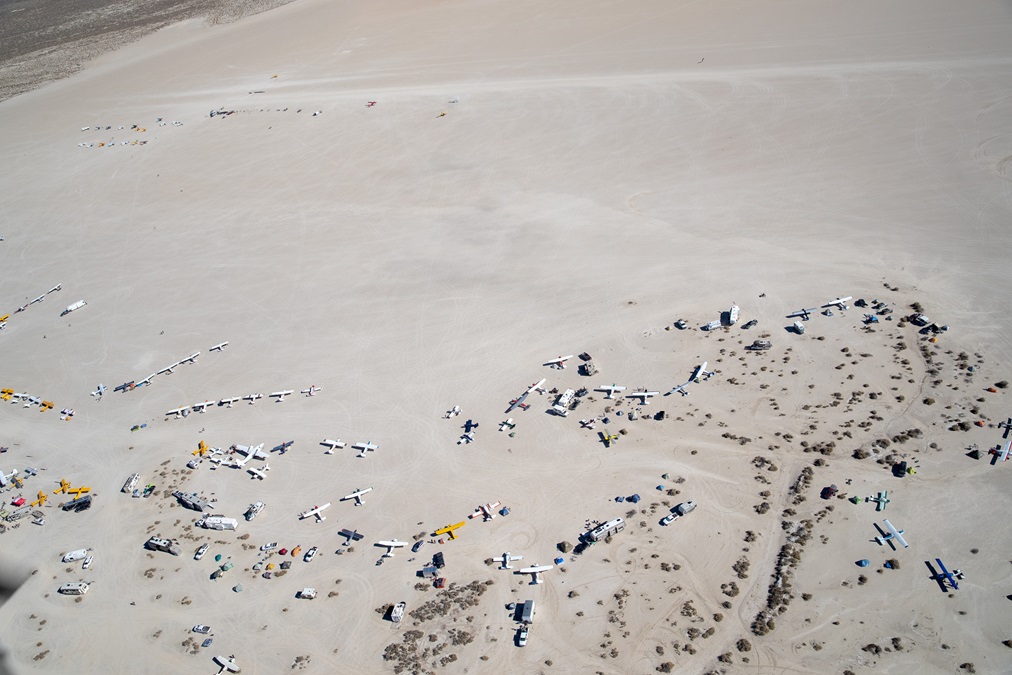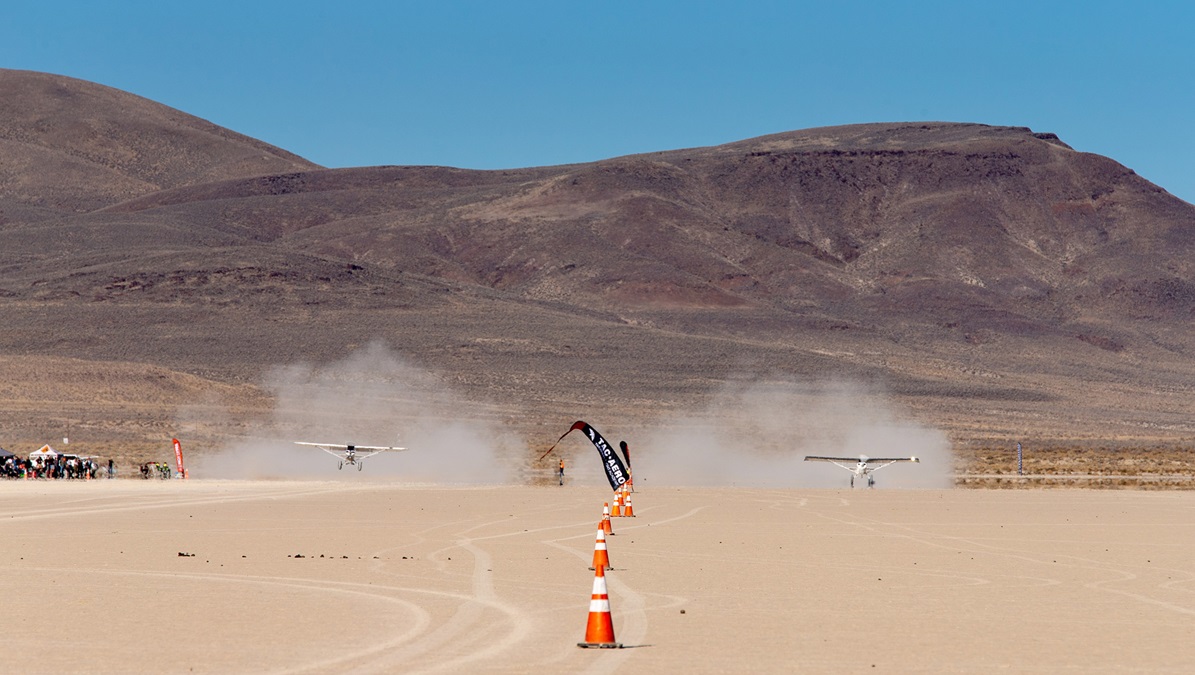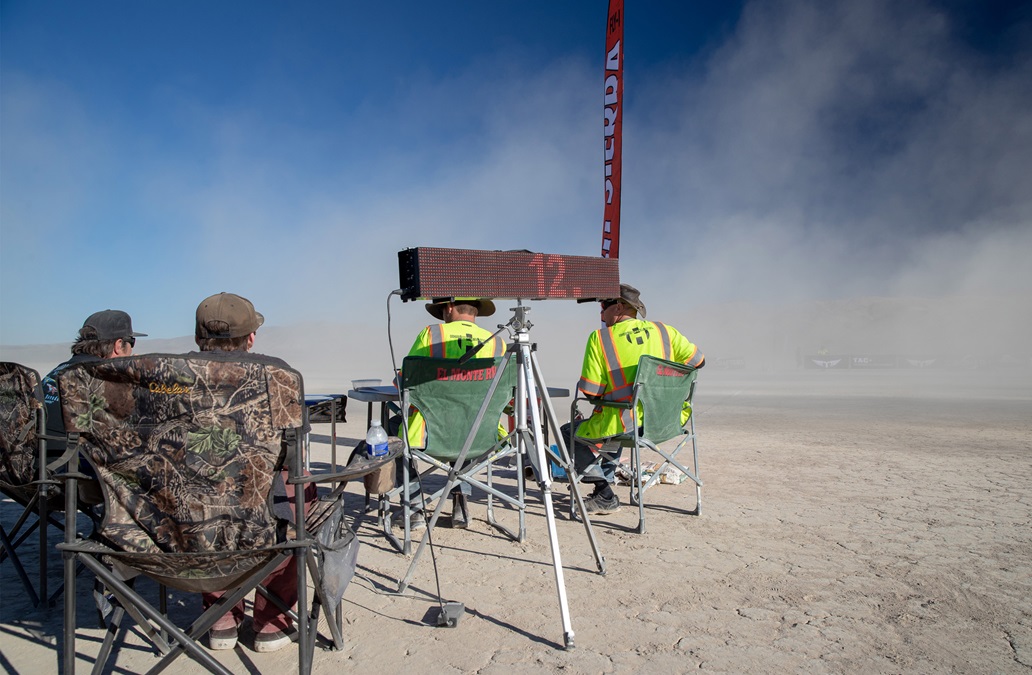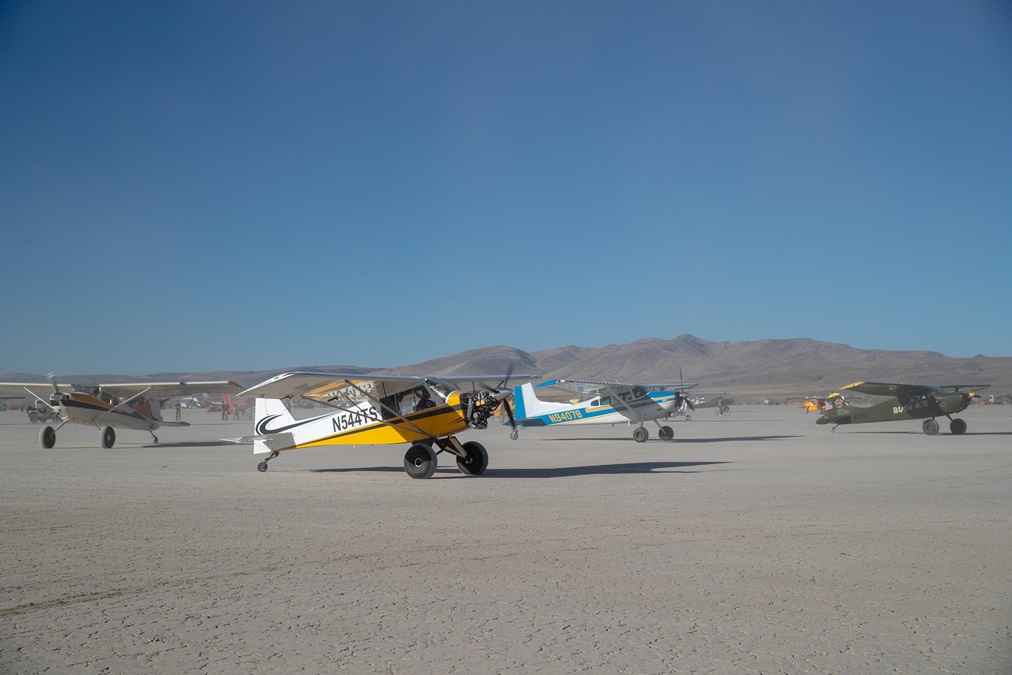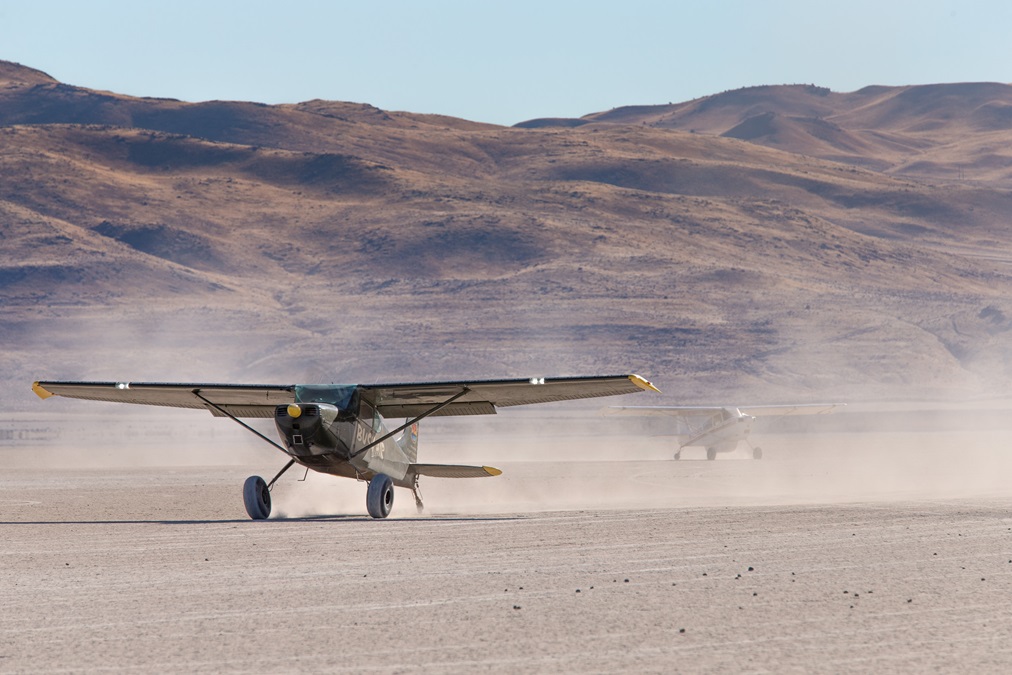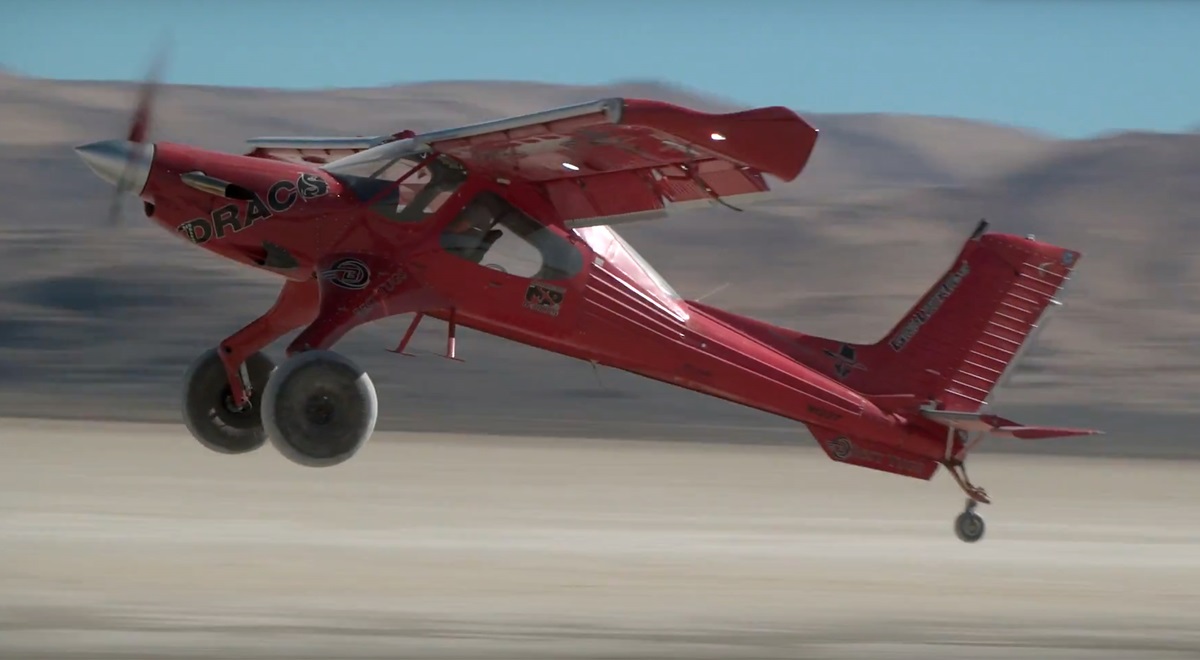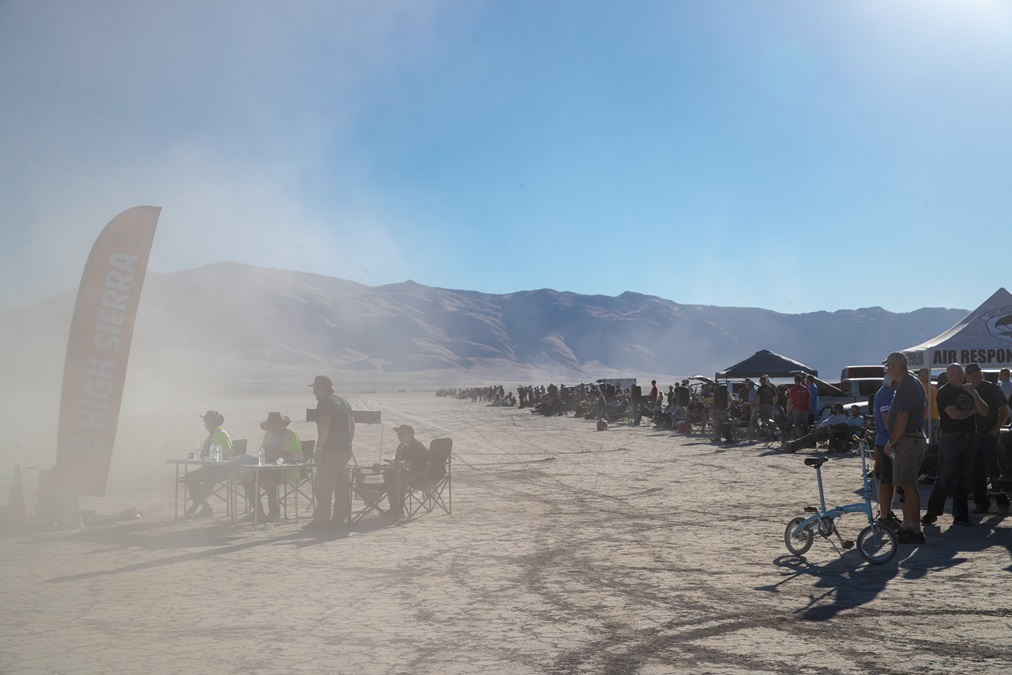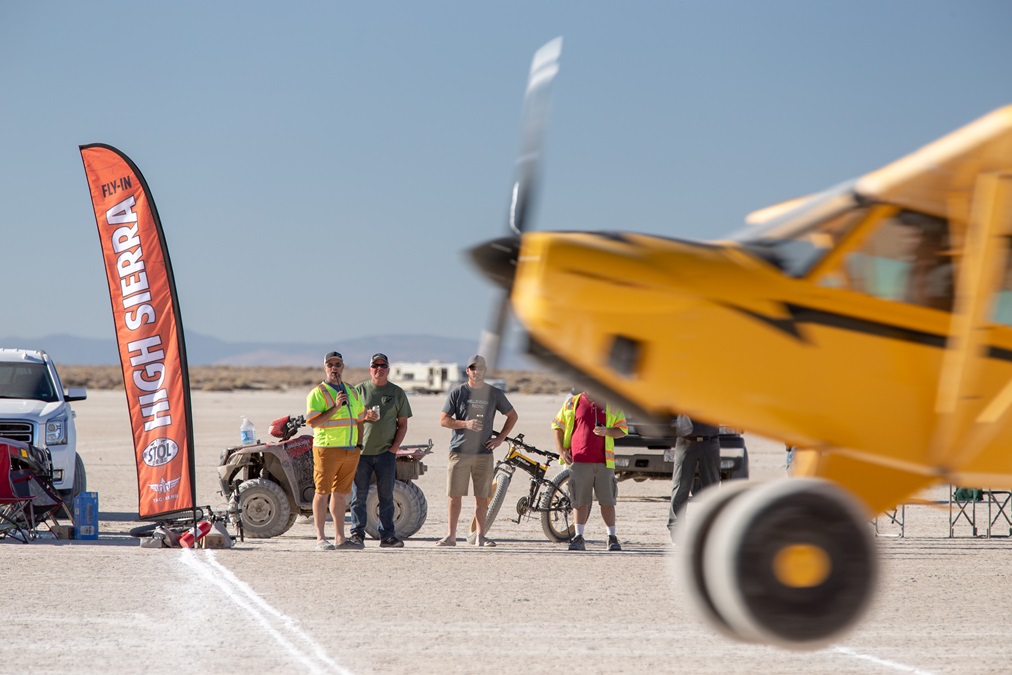Dragging at Dead Cow
Pilots, planes, and people descend on a dry lakebed to party—and drag race
Clouds of thick gray dust rolled across the Dead Cow lakebed airstrip, swirling and twisting and blinding spectators as they cheered on their favorite competitors during the 2018 High Sierra Fly-In STOL Drag Race from Oct. 18 to 21.
Situated somewhere in the middle of nowhere Nevada, the short takeoff and landing (STOL) drag races pit tailwheel aircraft and their pilots against one another in a race for speed and precision along a makeshift 3,000-foot runway. The surface hardened by the desert sun, this dry piece of nothingness becomes an oasis (sans water anywhere—BYOB) for four days in October while an intrepid group of friends who call themselves the “Flying Cowboys” put on a party. A party that puts aircraft and aviation prowess and skill on display.
Only 16 pilots and their aircraft survived the preliminaries and advanced to the Oct. 20 single elimination rounds for the main showdown. The aircraft raced down a three-quarter-mile straightaway, came to a full stop, turned 180 degrees, and raced back to where they began, often only a couple of feet above ground level—posting times as fast as one minute, 17 seconds. Costly time penalties were assessed for failing to stop or missing the touch-down mark.
Crowd favorite Draco, owned and lovingly maintained by Utah entrepreneur Mike Patey, is a modified Wilga 2000 turboprop STOL that looks like a giant red grasshopper. And it hops off the ground like that grasshopper is on cocaine. Patey and Draco, which caused a sensation during EAA AirVenture, emerged victorious, followed by Trent Palmer in his Kitfox, and Toby Ashley in his Carbon Cub.
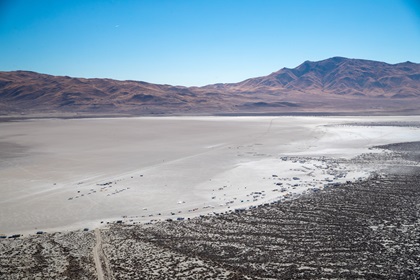
The Dead Cow lakebed is owned by Kevin Quinn, who started the airplane party in the desert nine years ago. He is helped by his Flying Cowboy friends Mike Patey and his twin brother Mark, Cory Robin, Jason Sneed, Scott Palmer, Trent Palmer, Steve Henry, and many other backcountry pilots. Although it’s not for the faint of heart or the driver who cares about his transmission, many people do drive to the site, which is about an hour and a half north of Reno. And “drive” means following mysterious directions, shadowing others’ tracks, rattling over bone-numbing washboard “roads”—and kicking up a lot of dust. A lot. You can tell if someone else is attempting the trek by their dust plume—typically spotted a mile away. Do not attempt this at night. Trust us on this.
People arrived in recreational vehicles, pickup trucks, SUVs, and Jeeps loaded with provisions, tents, bikes, motorcycles, and all-terrain vehicles. You cook for yourself Thursday through Saturday, but a steak dinner and bonfire (fireworks, too) reward you on Saturday night. There’s a catered breakfast Sunday morning. The $100 admission fee takes care of all that and contributes to the infrastructure—porta potties, loud speakers, and shade-making tents.
More than 1,200 people and 397 aircraft attended the ninth annual High Sierra Fly-In. Look for a full-length feature in an upcoming issue of AOPA Pilot.


